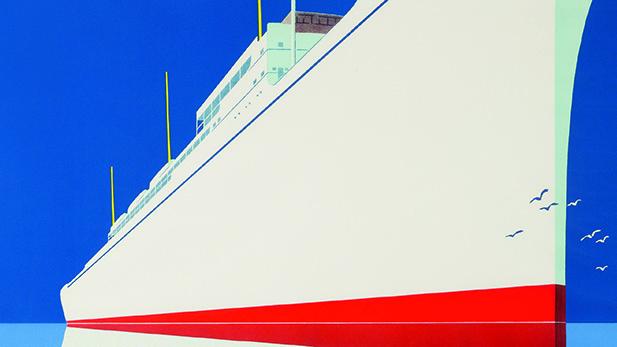The story of the rise and fall of EAC

(Copyright © Lindhardt & Ringhof)
For the first time the complete story is being told of the rise and fall of one of the largest Danish companies in history. In his new book Vision: EAC, Denmark and the world associate Professor Martin Iversen describes the rise and fall of EAC.
The East Asiatic Company (EAC) was founded in 1897 by Councillor of State H.N. Andersen, who had an expansive network in Asia and envisioned building infrastructure and developing manufacturing.
His initial primary aim was to establish a shipping route between Copenhagen and Bangkok, and over the course of the next 100 years the activities grew to encompass worldwide trade, industry and shipping.
With a grand international vision from the start, EAC represents a piece of the history of business in Denmark. EAC influenced the history of Denmark in the first half of the twentieth century despite the fact that the economy became continuously more closed and protectionist during that time.
“In order to understand Danish business and industry, knowing the history of EAC is imperative. It’s that simple. EAC was the equivalent of a mercantile Ministry of Foreign Affairs, with young Danish men stationed in far-flung places in Africa, South America and Asia in countries such as Gambia, Venezuela and Burma. For decades they built up local knowledge of crucial significance for the unique international Danish approach to trade. As a result EAC was one of the few major Danish bearers of culture, on a par with Carlsberg, Danske Bank, LEGO and A.P. Møller-Mærsk,” explains Iversen.
In 1970 EAC was Scandinavia’s largest company based on revenue, but with the acceleration of globalisation the wind went out of EAC’s sails, and in 2015 the EAC name was dismantled.
Powerbrokers in control
Iversen is the first historian to be granted full, unrestricted access to EAC's complete archives, the extensive written sources supplemented by interviews and clarifying conversations with a wide range of key individuals still around to tell their story.
The book examines the powerbrokers, their motivation, actions and subsequent consequences. In other words, it deals with EAC’s top management and the decisions key members of the executive and management boards made.
EAC was a monumental undertaking, from the transport of elephants across the jungles of Siam and elegant ships with black and bordeaux hulls to the company’s imposing headquarters. The book’s structure reflects the EAC’s distinctive physical features.
The book is richly illustrated, with the main text also accompanied by a separate set of pictures comprising nine visual themes on, for example EAC in Africa, H.N. Andersen’s peace negotiations, the MS Jutlandia, EAC apprentices and voyages on the Fionia.
Martin Iversen is a business historian at the Department of Management, Politics and Philosophy at CBS.
|
Martin Iversen, mi.mpp@cbs.dk, is a business historian at the Department of Management, Politics and Philosophy at CBS.
Purchase the book at Academic Books.
Or make a reservation at CBS Bibliotek. |